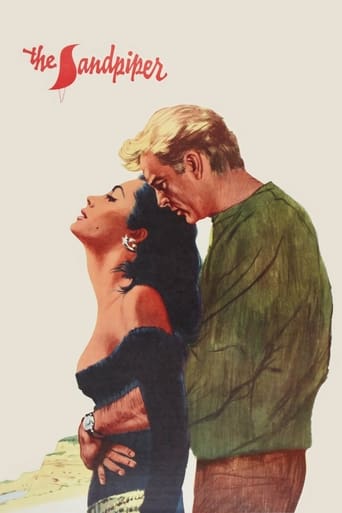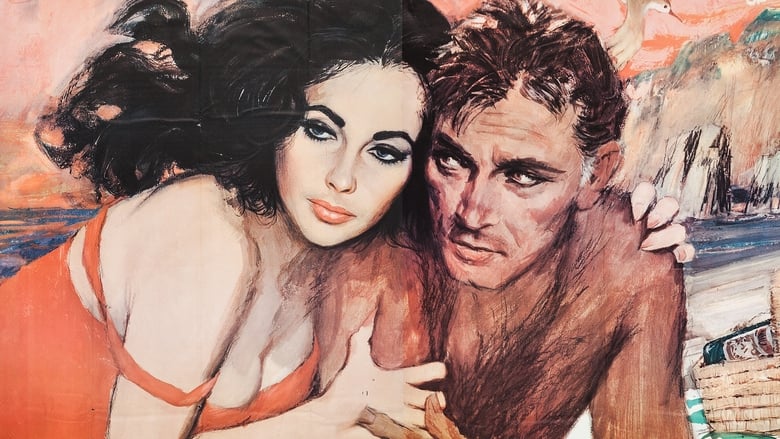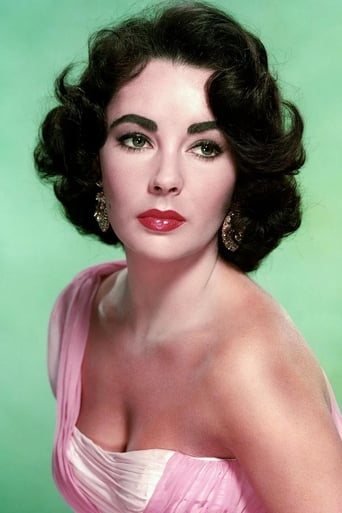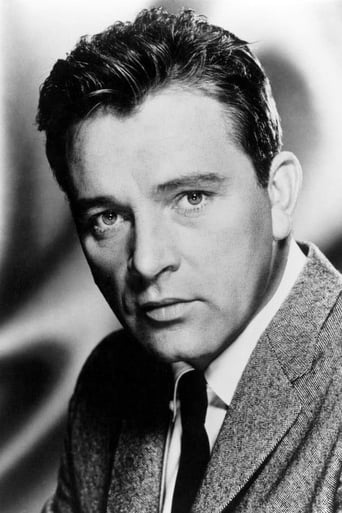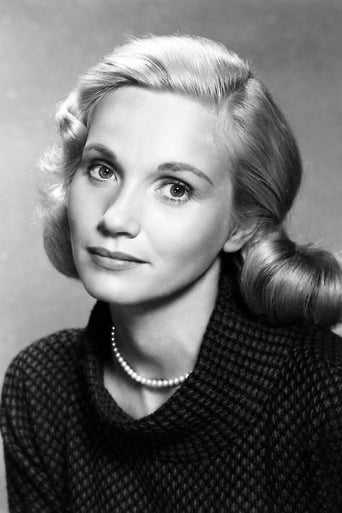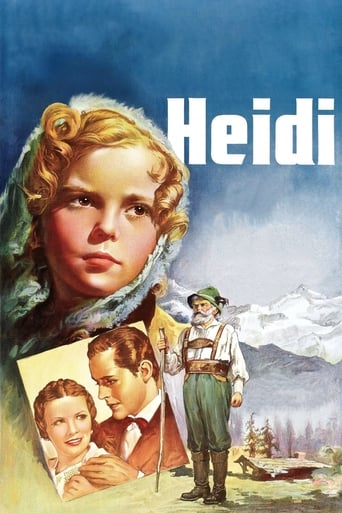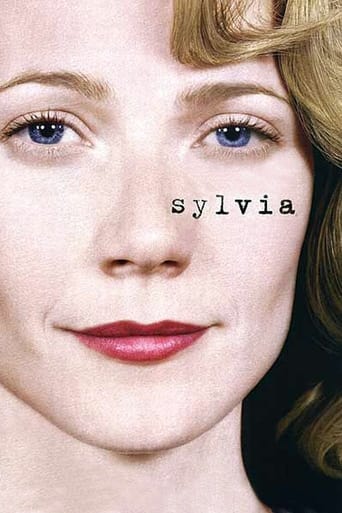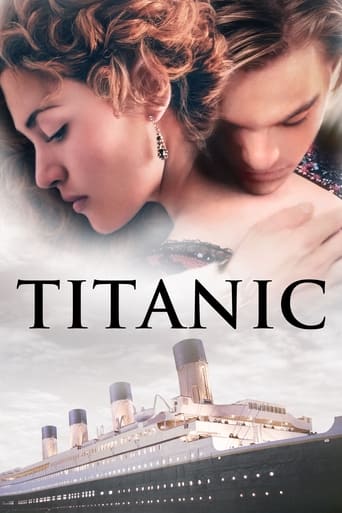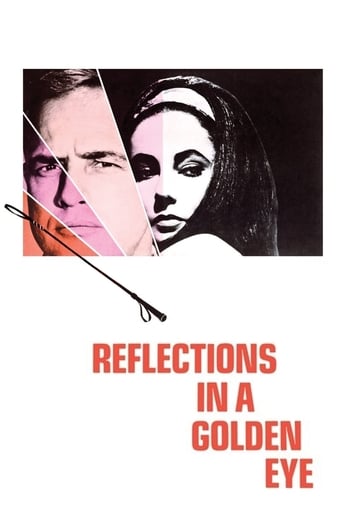The Sandpiper (1965)
A free-spirited single mother forms a connection with the wedded headmaster of an Episcopalian boarding school in Monterey, California.
Watch Trailer
Cast


Similar titles
Reviews
Excellent adaptation.
It's funny watching the elements come together in this complicated scam. On one hand, the set-up isn't quite as complex as it seems, but there's an easy sense of fun in every exchange.
This is a small, humorous movie in some ways, but it has a huge heart. What a nice experience.
This is a coming of age storyline that you've seen in one form or another for decades. It takes a truly unique voice to make yet another one worth watching.
The Sandpiper is interesting for its buffoonish take on the art and counter cultures of the 1960's. Taylor plays a struggling iconoclastic painter who somehow manages to live in the coolest place on earth, a designer home hanging off the cliffs of Big Sir with a view of the Pacific. Charles Bronson plays a beatnik sculptor, right. And they all hang out with a cool black guy artist, played by James Edwards. Burton is the Dr. Rev. Edward Hewitt, a cleric who falls in love with Taylors' breasts. The artwork sucks. The portrait of Taylor that the Bronson character sculpts is atrocious. She looks like she's straining on the toilet. The real artist, Edmund Kara, is a great sculptor but this piece is a mess. Taylor's endless paintings of the symbolic "sandpiper" also suck. They were painted by Elizabeth Duquette, the socialite wife of Tony Duquette, the great designer. They lack even rudimentary rendering ability; no sense of form, a mess of individual feathers that add up to neither a feeling of the whole nor a celebration of pattern, they're clumsy. Only a Hollywood moron with money would buy this junk. On the upside, the music is lush and the scenery sublime.
O my goodness ! ! the scenery is AWESOME, BEAUTIFUL, i think i was holding my breath at times... also the passion between Elizabeth and Richard !!! was that acting or (wow) ! some of the lines Elizabeth said really can make one think about true love.,i wonder if they were married at the time when this was filmed., every time Richard looked at her , he looked like he was going to pass out with love., and the director (WOW) directors like Vincent is the reason IM IN LOVE with movies . BUT NOW here is the question ??? does anybody know whose house they used on that cliff in Big Surf to film that ???? did the house belong to MGM or was it a private owner ?
So let me go ahead and diverge from the main body of critics who pooh-poohed this mid-60's film entry!! To me, it's a thoroughly poignant and enjoyable romp through the Monterey CA life style during that time. Opening with Johnny Mandel's haunting "The Shadow of Your Smile" and the video setting of the Big Sur coastline, you are immediately transported to another place in time and space. All the usual moral and religious challenges/ambiguities that were taking place during those pivotal years get duly scrutinized and developed here. Liz & Richard do a masterful job in their respective roles as the free-spirited artist lady and the pompous, semi-self righteous minister/dean of a prestigious religious school. After their initial ideological combativeness, they begin to absorb and understand each others' seemingly contradictory viewpoints and proceed to fall in love, in a most tender & heartfelt manner. Not so good, however, for the minister, who is already married with 2 boys. The moral dilemma that ensues provides more than ample fodder for our scrutiny.Aside from the two aforementioned lead characters, the supporting cast including Eva Marie Saint, Robert Webber, James Edwards and Charles Bronson more than amply fulfill their thespian duties. Great directing by Vincent Minnelli and screen writing by an excellent team help in no small manner to propel the thrust of this film. My last and my most heartfelt kudos, however, are saved for the masterful work by Johnny Mandel on the sound track, in general, and on the awesomely bitter-sweet and gorgeous aforementioned theme song, specifically. Without that sophisticated and absorbing musical ambiance, the movie's impact would have been severely diminished!!
"The Sandpiper" was the second in a number of films ("The VIPs" was the first) made together by Richard Burton and Elizabeth Taylor. Their romance, which had begun on the set of "Cleopatra", had both enthralled and scandalised the public, and the studios wanted to make the most of their notoriety. The public perception of Dick and Liz as a glamorous but scandalous couple can only have been increased by the subject-matter of "The Sandpiper". At one time a film about a clergyman engaged in an adulterous affair would have been an unthinkable violation of the Production Code. By 1965, however, the Code, although not quite dead, was no longer in robust health, and a film on this subject, although still highly controversial, was no longer impossible.Taylor's character, Laura Reynolds, is an unmarried mother who works as an artist and lives with her nine-year-old son Danny in an isolated California beach house. (The film's title derives from an injured sandpiper which she rescues and nurses back to health thereafter and becomes a symbol of freedom). Danny's behaviour, however, has got him into trouble with the law, and a judge orders her to send the boy to a local boarding school. Laura is reluctant to do this; she is a free spirit who distrusts any form of institutionalised education. To make matters worse from her point of view, the school is run by the Episcopalian Church, and she is an atheist whose attitude to religion is one of positive hostility rather than mere indifference. Nevertheless, she realises that she must comply with the judge's order or risk losing custody of her boy.Burton plays Dr. Edward Hewitt, an Episcopalian priest and headmaster of the school. Although his values are very different from Laura's, Edward is something of an idealist and is becoming disillusioned with his life at the school, feeling that he is neither a priest nor an educator but merely a fund-raiser. (The school is currently engaged in a major fund-raising drive to build a new chapel, something Edward feels is unnecessary). Edward takes a great interest in Danny's progress and finds himself increasingly drawn towards Laura, possibly because she is so different both from him and from his wife Claire. Claire is attractive and supportive of her husband but rather staid and conventional compared to the bohemian Laura. Eventually Edward and Laura begin an affair, even though he is a married man. (This plot line reminded me of Iris Murdoch's novel "The Sandcastle", published a few years before "The Sandpiper", which also dealt with an adulterous affair between a married older schoolmaster at a boarding school and a young female artist).Danny himself does not play a major role, being more of a plot device than a character in his own right. I felt that this was a weakness, given that one of the themes of the film is two different philosophies of education. Laura's view is that all formal educational establishments, particularly conservative boarding schools like Dr Hewitt's, are undesirable because they exist in order to turn children into conventional conformists. Her own solution, however, home-schooling Danny in a remote part of the world away from any other children and without a father-figure in his life, struck me as being likely to turn him into a self-centred loner, although the film rather shies away from criticising Laura on this point. The opening scenes in which Danny shoots a deer strike a particularly jarring note. It seemed to me highly improbable that a woman like Laura, whose whole philosophy seems to be one of living in harmony with nature, would allow her young son to have a rifle and then, when he uses it to kill an animal out of wanton curiosity, shrug the whole thing off as a harmless youthful escapade.Elizabeth Taylor looks stunning, but neither she nor Burton are really at their best here. Burton is certainly not as good as he was as the world-weary spy in "The Spy Who Came in from the Cold", also made in 1965. The relationship between Edward and Laura is not based simply upon sexual attraction, but upon a growing realisation that despite their differences they are kindred spirits. The unbeliever Laura, paradoxically, has more in common with Edward's Christian idealism than does the conventionally pious Claire. The trouble is that one never really senses in Burton's performance the idealistic religious believer hiding behind the mask of the formal and pedantic schoolmaster. Taylor always comes across as slightly too glamorous to be altogether convincing as a proto-hippie.The film contains some attractive photography of the Californian coastal scenery (although the colours in the indoor scenes are often rather dull) and there is a notable musical score, including the song "The Shadow of Your Smile". As a psychological and emotional drama it has its points of interest, but overall it is a rather dated sixties period-piece, most interesting as a record of that decade's official Golden Couple. 6/10

